Runners of all ages, but especially older runners, should make maintaining strong feet, balance and safe, efficient running mechanics a top priority. But, unfortunately, cushioned running shoes with more cushioning under the heel than the front of the shoe were found to expose you to greater risks of injury by engaging more rigid heel strike landings tied to an over-stride that produces higher levels of impact stress due to the relatively small surface area of contact of landing heel-first. This impact also produces a compressive force that pries into the knee.
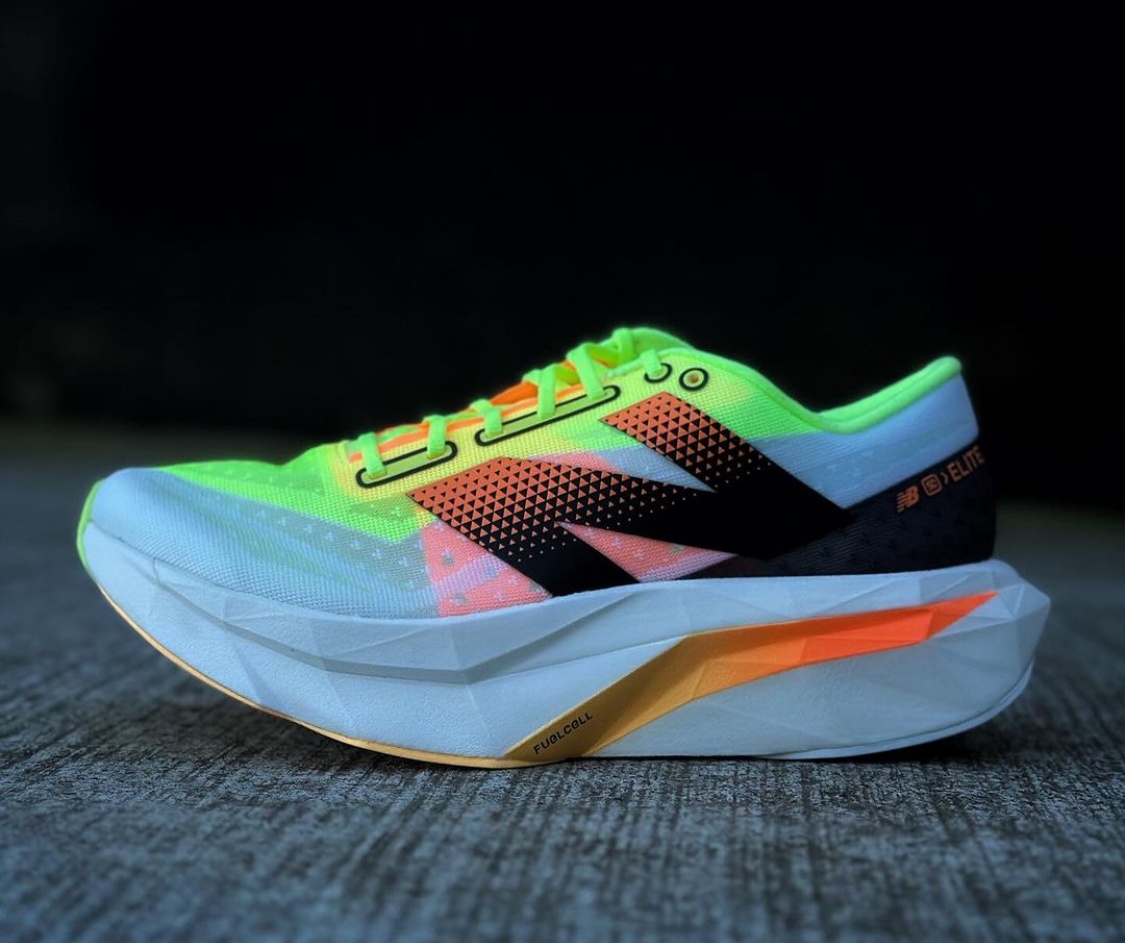
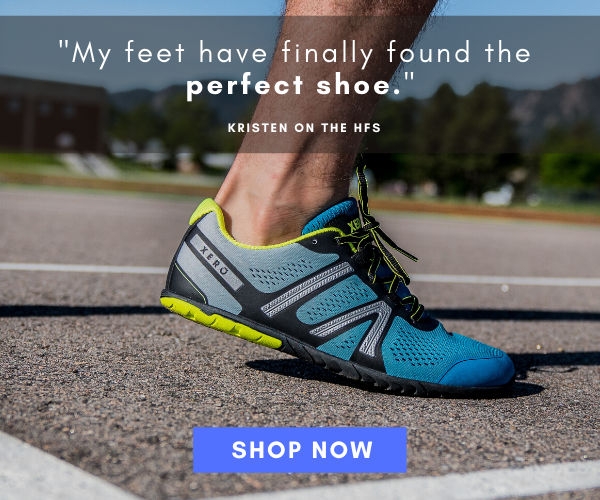
In the case of older runners, the thicker the underfoot cushioning, the greater the risk of falling because for one, there’s too much cushioning for the foot to secure a sturdy connection with the ground. For another, the feet receive less ground-feel which was found to impair motor performance, and is also a big contributor to falls in elderly runners. It’s for all these reason that its well-sourced that running shoes with a significantly large heel-to-toe offset is a losing strategy for injury prevention, especially for older runners.
Here’s more from the research:
- Numerous studies (references below article) have found that cushioned running shoes keep feeding injuries by directly inhibiting the foot’s ability to adapt to mechanical stress and fosters bio-mechanical alterations as a runner ages.
- An unusually fragile foot structure caused by ongoing use of cushioned running shoes and a lack of barefoot activity coincides with the onset of age-related musculoskeletal degeneration, suggesting that older runners who depend on conventional running shoes have feet unable to sustain the use of running without injury. And, weak feet coincides with poor ankle and knee-joint mobility, making running a risky business for older runners.
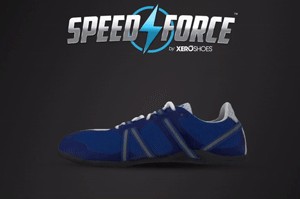
Another significant drawback of these shoes for older runners is the feet will not remain functionally strong due to the narrow and stiff design, which counters the normal shape of the foot, keeps the foot’s muscles dormant which is when foot strength tends to fade away.
- The nature of the lower extremity weakness in older runners is the hallmark of the use of stiff, heavily cushioned running shoes which prevents the bony architecture of the foot from yielding normal loading (Robbins and Hanna). This is when running becomes a pain-related activity for the older runner.
- Fukuchi et al. found that habitually shod (shoe) older runners had greater calf muscle weakness and reduced ankle plantar and dorsi- flexion range of motion compared to young shod runners.
- The major areas of weakness in older runners were distal aspects of the lower extremity such as the calves, ankles and feet.
Why Minimalist Running Shoes Are Essential for Older Runners
The good news is your running shoes don’t have to be a source of injury because minimalist running shoes (shown below), which are more ergonomic shoes that positions the heel and forefoot at an equal distance from the ground, while allowing a better feel of the ground, so you can detect more clearly where you’re stepping. At the same time, the flatter sole enables your running mechanics to be much better ordered in the form of a low-impact forefoot strike tied to improvements in shin, knee and upper body position angles.
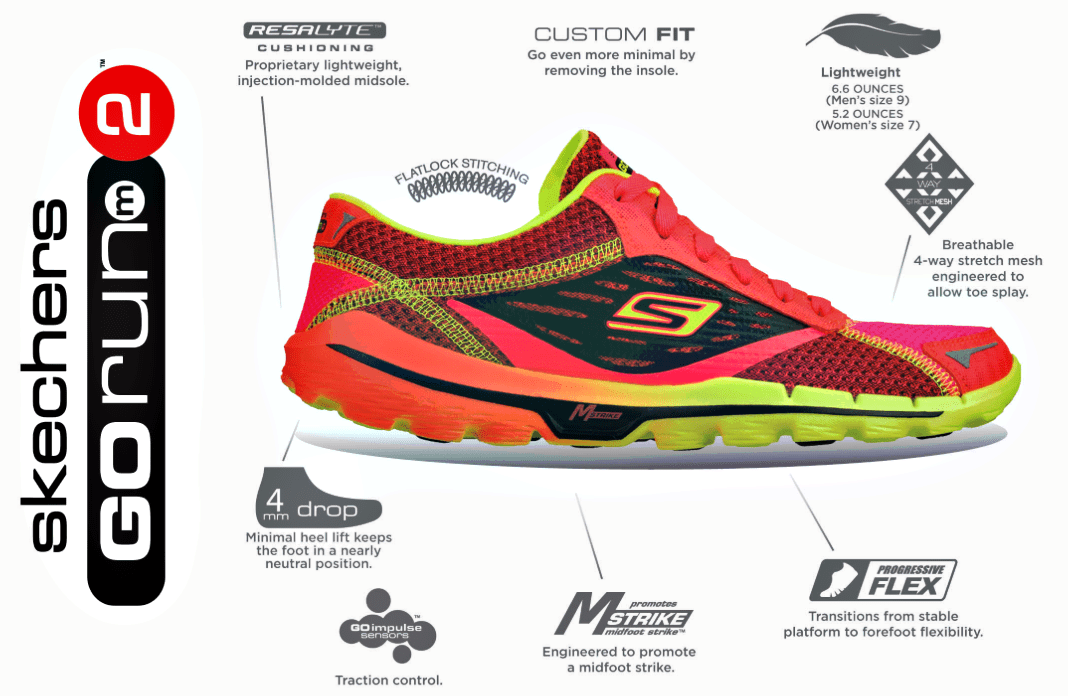
Another big functional asset of minimalist running shoes is they are fully flexible which creates more space for your toes to expand for extra secure footing, while the full freedom of movement keeps the foot’s muscles continuously engaged at higher level. This is the only way to develop stronger, tolerant feet! Not to mention, its most obvious that stronger feet helps elderly runners stay injury-free.
- A telling study by Robbins and Hanna discovered that the foot of a habitually shod older runner can be easily rehabilitated via barefoot or minimalist (barefoot like shoes) adaptations and can become strong to deflect loading and absorb impact without protective running shoes. Not to mention, barefoot conditions also encourages a forefoot strike landing during running, which induces resistance to lower extremity injury.
Bottom line, the feet need to endure gradual mechanical stress via increased barefoot walking and routine use of minimalist shoes to grow strong whereas without mechanical stress, the feet as well as the body weakens. This is why habitually barefoot runners have physically stronger legs and feet and more functional biomechanics that sustains best on the body than the average shod-jogger.
- The novel difference is habitually shod (shoe) runners injure frequently, especially older ones, because they wear cushioned running shoes to avoid mechanical stress!!
The Home Message
For older runners, strengthening the feet and ankles is incredibly rehabilitative with minimalist footwear. Even better that the clearer feel of the ground allows your mechanics to become optimized by the increased of sensory involvement that boosts stability perception and improves impact protection through enhanced reflexive responses in the leg, thereby greatly reducing the risk of falls. This is fundamentally why it makes the most sense for older runners to trade their cushioned clunkers that have never been proven to pay off for injury prevention, for more functional footwear, minimalist shoes, which gives you the most widespread functional improvements of the feet, leg and even upper body posture!
Read more here on why minimalist shoes works for everyone!
If you’ve enjoyed my post, you’ll love my YouTube channel, here, where I reveal the evidence-based reasons forefoot running is better than heel strike running.

References:
Fukuchi, R.K., Duarte, M., 2008. Comparison of three-dimensional lower extremity running kinematics of young adult and elderly runners. J. Sports Sci. 26, 1447–1454.
Fukuchi et al. Flexibility, muscle strength and running biomechanical adaptations in older runners. Clin Biomech, 2014; 304-310.
McGibbon, C.A., 2003. Toward a better understanding of gait changes with age and disablement: neuromuscular adaptation. Exerc. Sport Sci. Rev. 31, 102–108.
Robbins SE and Hanna AM. Running-related injury prevention through barefoot adaptation. Med Sci Sports Exerc, 1987; 19(2):148-156.
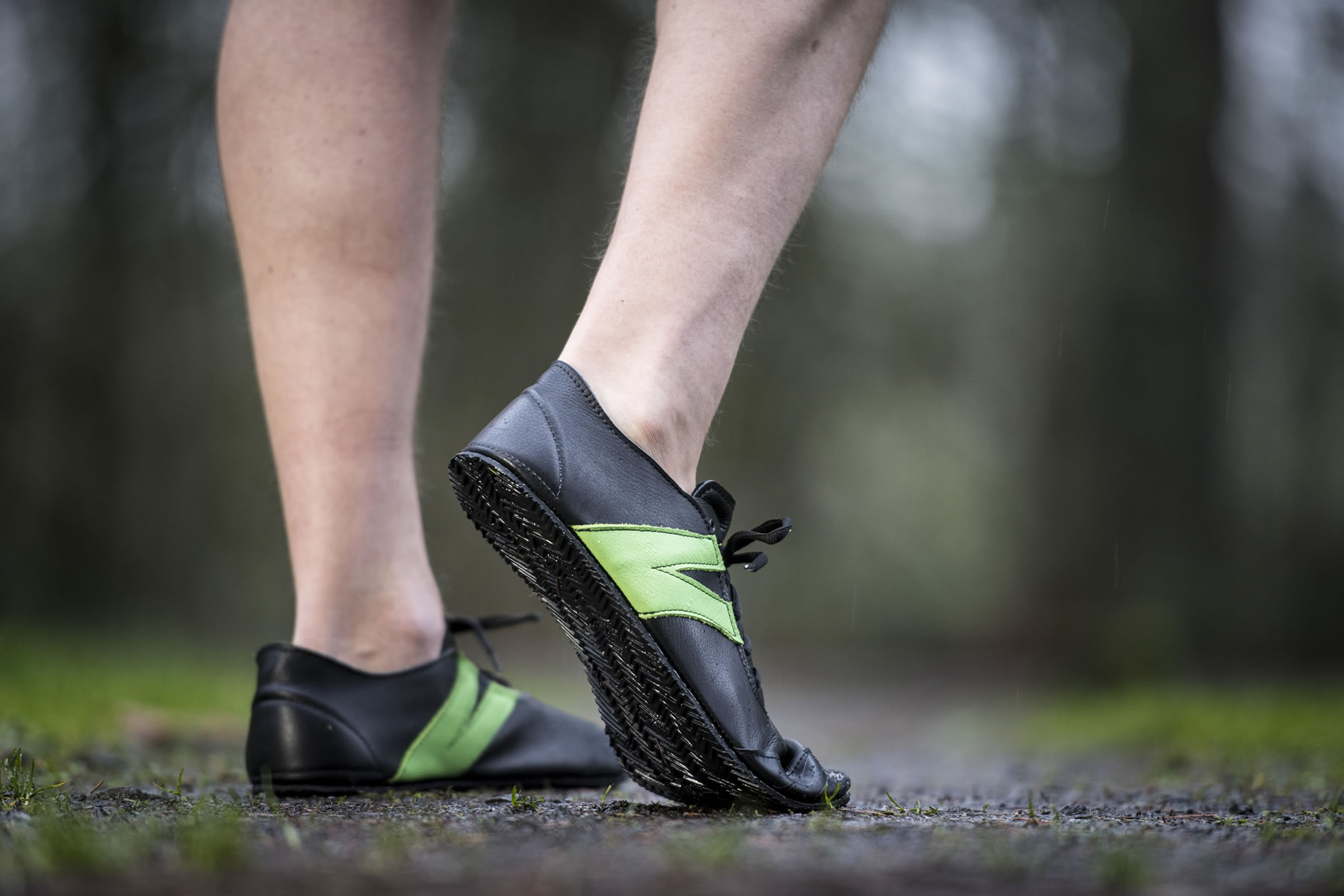
If you’d like, you can support Run Forefoot and help keep it going by making a donation in any amount of your choosing:

Or, you can support Run Forefoot by shopping at the BEST Barefoot Shoe Brands, and be sure to bookmark these links 🙂
Lonowear: https://lonowear.com/?ref=cedsholh
Saguaro: https://www.saguaro.com/?ref=9bVA8fEkmDvB-I
Vibram FiveFingers: https://www.anrdoezrs.net/click-7600968-11372648
Vivobarefoot: https://amzn.to/3vycQOY
Be Lenka: https://www.tkqlhce.com/click-7600968-13947200
Xero Shoes: https://xeroshoes.com/go/Run_Forefoot
Iguaneye: https://www.iguaneye.com/?ref=8tfXVc92
Soft Star Shoes: https://shrsl.com/3mp1b
Wilding Shoes: https://bit.ly/3lIygQP
Bretta Riches
BSc Neurobiology; MSc Biomechanics candidate, ultra minimalist runner & founder of RunForefoot. I was a heel striker, always injured. I was inspired by the great Tirunesh Dibaba to try forefoot running. Now, I'm injury free. This is why I launched Run Forefoot, to advocate the health & performance benefits of forefoot running and to raise awareness on the dangers of heel striking, because the world needs to know.
Latest posts by Bretta Riches (see all)
- Can You Run In Barefoot Shoes? Yes, But DON’T Heel Strike! - 21/07/2024
- Why Cushioned Running Shoes Are Really Bad for Your Feet - 19/07/2024
- Do Cushioned Running Shoes Cause Injuries? - 17/07/2024
